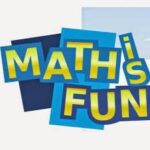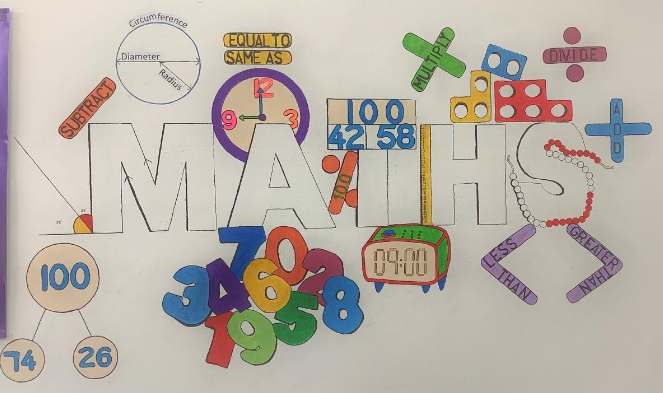Maths

Introduction
At Lanner Primary School, we recognise maths as an essential life skill and we are committed to ensuring that all children have a positive and meaningful experience of the subject. We aim to present maths as a challenging, exciting and relevant subject in order to promote a confident attitude, not just in ‘maths lessons’ but across the entire curriculum and beyond. By teaching using small steps throughout each lesson, our children gain the necessary foundational knowledge to grasp more advanced concepts.
At Lanner, we recognise that all mathematical concepts are connected; some concepts can’t be grasped without a good understanding of other topics. Therefore, we have sequenced the learning throughout all year groups so that it builds on other areas of the curriculum, e.g. a place value unit will always take precedent at the beginning of each year to consolidate an understanding of our number system. Similarly, teaching the four operations will always be taught before fractions, decimals and percentages as a solid foundation in division (and multiplication) is crucial to their understanding and skill application.
The rationale behind our approach to teaching mathematics lies within the research from the Mathematics Specialist Teacher Programme, the NCETM/ Maths Hub as well as the National Curriculum, which states he following:
The expectation is that most pupils will move through the programmes of study at broadly the same pace. We use Whiterose small steps to ensure a well sequenced curriculum, amended to suit our children’s needs, and use NCTEM resources, including the Mastering Number programmes to compliment and support this.
Pupils who grasp concepts rapidly should be challenged through being offered rich and sophisticated problems before any acceleration through new content.
Those who are not sufficiently fluent with earlier material should consolidate their understanding, including through additional practice, before moving on. We use Number Sense fluency and Number Sense Times Tables to close gaps in learning.
Supporting Every Pupil in Mathematics
Early Learning Goals Parent and Carers Guide
The Mathematical Aims
To ensure that pupils:
- Become fluent in the fundamentals of mathematics, including through varied and frequent practice with increasingly complex problems over time, so that pupils develop conceptual understanding and the ability to recall and apply knowledge rapidly and accurately.
- Reason mathematically by following a line of enquiry, conjecturing relationships and generalisations, and developing an argument, justification or proof using mathematical language.
- Can solve problems by applying their mathematics to a variety of problems with increasing sophistication, including breaking down problems into a series of simpler steps and persevering in seeking solutions.
- Foster positive attitudes towards mathematics by developing pupils’ confidence, independence, persistence and co-operation skills.
At Lanner Primary School, we believe that mathematics is an interconnected subject in which pupils need to be able to move fluently between representations of mathematical ideas. We begin this representation exposure in our EYFS setting. The programmes of study are organised into distinct domains (we use the White Rose Materials to ensure coverage, progression and consistency of approach/ models/ images etc.), but pupils should make rich connections across mathematical ideas to develop fluency, mathematical reasoning and competence in solving increasingly sophisticated problems. They apply their mathematical knowledge and understanding to aid and improve their understanding in science, DT, RE, PE and other subjects. The expectation is that the majority of pupils will move through the programmes of study at broadly the same pace. However, decisions about when to progress should always be based on the security of pupils’ understanding and their readiness to progress to the next stage.
https://www.ncetm.org.uk/classroom-resources/exemplification-of-ready-to-progress-criteria/
Take a look at our maths progression maps across the school:
Maths-Early-Years-and-Key-Stage-1-Progresssion
Geometry posistion direction and movement
EYFS
In Early Years, Mathematics involves providing children with opportunities to develop and improve their skills in counting, understanding and using numbers, calculating simple addition and subtraction problems; and to describe shapes, spaces, and measure.
Number (Early Learning Goal)
Children at the expected level of development will:
- Have a deep understanding of number to 10, including the composition of each number;
- Subitise (recognise quantities without counting) up to 5;
- Automatically recall (without reference to rhymes, counting or other aids) number bonds up to 5 (including subtraction facts) and some number bonds to 10, including double facts.
Numerical Patterns (Early Learning Goal)
Children at the expected level of development will:
- Verbally count beyond 20, recognising the pattern of the counting system;
- Compare quantities up to 10 in different contexts, recognising when one quantity is greater than, less than or the same as the other quantity;
- Explore and represent patterns within numbers up to 10, including evens and odds, double facts and how quantities can be distributed equally.
Key Stage 1
The National Curriculum (2014) states that:
The principal focus of mathematics teaching in key stage 1 is to ensure that pupils develop confidence and mental fluency with whole numbers, counting and place value. This should involve working with numerals, words and the four operations, including with practical resources [for example, concrete objects and measuring tools].
At this stage, pupils should develop their ability to recognise, describe, draw, compare and sort different shapes and use the related vocabulary. Teaching should also involve using a range of measures to describe and compare different quantities such as length, mass, capacity/volume, time and money.
By the end of year 2, pupils should know the number bonds to 20 and be precise in using and understanding place value. An emphasis on practice at this early stage will aid fluency.
Pupils should read and spell mathematical vocabulary, at a level consistent with their increasing word reading and spelling knowledge at key stage 1.
Lower Key Stage 2
The National Curriculum (2014) states that:
The principal focus of mathematics teaching in lower key stage 2 is to ensure that pupils become increasingly fluent with whole numbers and the four operations, including number facts and the concept of place value. This should ensure that pupils develop efficient written and mental methods and perform calculations accurately with increasingly large whole numbers.
At this stage, pupils should develop their ability to solve a range of problems, including with simple fractions and decimal place value. Teaching should also ensure that pupils draw with increasing accuracy and develop mathematical reasoning so they can analyse shapes and their properties, and confidently describe the relationships between them. It should ensure that they can use measuring instruments with accuracy and make connections between measure and number.
By the end of year 4, pupils should have memorised their multiplication tables up to and including the 12-multiplication table and show precision and fluency in their work.
Pupils should read and spell mathematical vocabulary correctly and confidently, using their growing word reading knowledge and their knowledge of spelling.
Upper Key Stage 2
The National Curriculum (2014) states that:
The principal focus of mathematics teaching in upper key stage 2 is to ensure that pupils extend their understanding of the number system and place value to include larger integers. This should develop the connections that pupils make between multiplication and division with fractions, decimals, percentages and ratio.
At this stage, pupils should develop their ability to solve a wider range of problems, including increasingly complex properties of numbers and arithmetic, and problems demanding efficient written and mental methods of calculation. With this foundation in arithmetic, pupils are introduced to the language of algebra as a means for solving a variety of problems. Teaching in geometry and measures should consolidate and extend knowledge developed in number. Teaching should also ensure that pupils classify shapes with increasingly complex geometric properties and that they learn the vocabulary they need to describe them.
By the end of year 6, pupils should be fluent in written methods for all four operations, including long multiplication and division, and in working with fractions, decimals and percentages.
Pupils should read, spell and pronounce mathematical vocabulary correctly.

